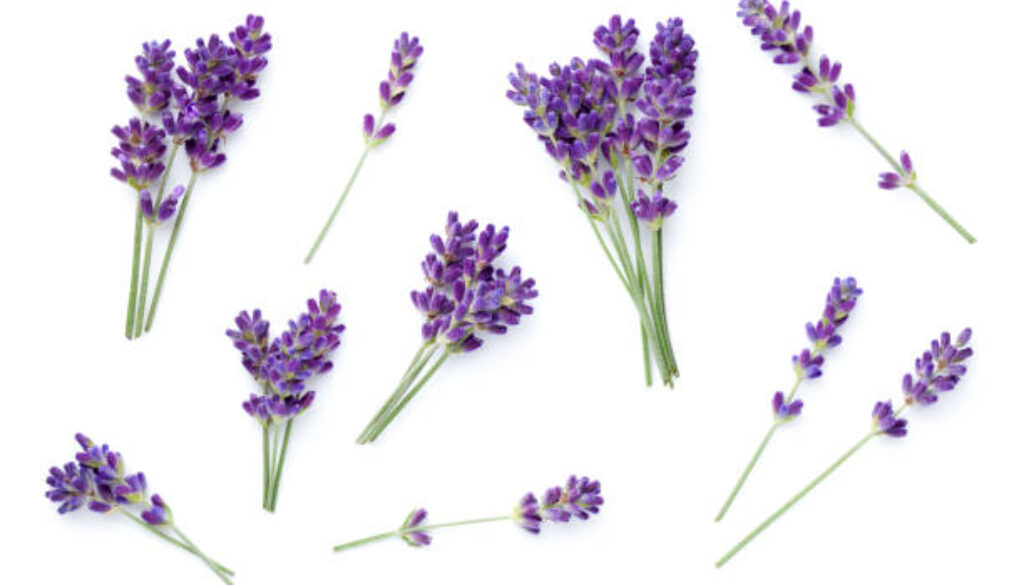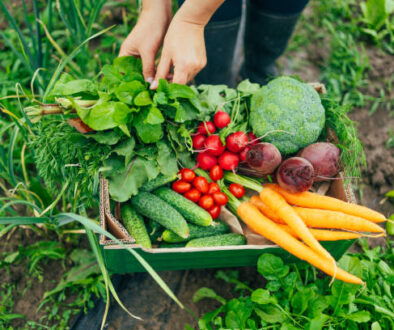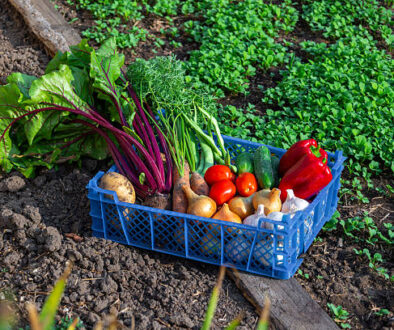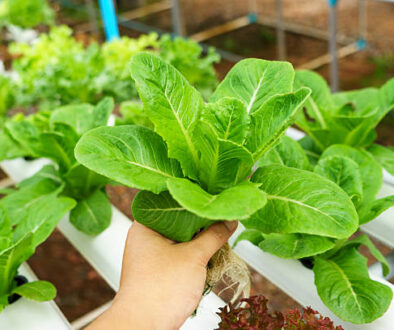Lavender – The Perennial Anti-Inflammatory Herb
This post may contain paid and/or affiliate links. I may earn a small commission at no extra cost to you.
This beautiful purple herb is more than just a fragrant flower; it’s a powerful healing plant known for its calming and anti-inflammatory properties.
Growing lavender at home is simple, and it can fit perfectly into your medical garden or even a small herbal medicine garden.
It’s also a wonderful choice for anyone building a healing herbs garden or a diverse medicinal herbs garden.
With the right care, lavender becomes one of those timeless medicinal plants you’ll always turn to.
Why Lavender Deserves a Spot in Your Garden
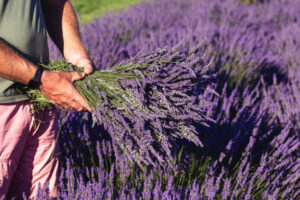
Lavender is one of those plants that feels like a gift from nature.
Not only is it beautiful and fragrant, but it’s also packed with benefits that make it a must-have in any garden focused on health and well-being.
Known for centuries as both a healing herb and a soothing remedy, lavender has earned its reputation as a natural powerhouse.
From calming the mind to reducing inflammation in the body, this plant is much more than a garden decoration.
By planting lavender at home, you’re adding a reliable and versatile herb that can support both your health and the beauty of your outdoor space.
Whether you use it fresh, dried, or in oils and teas, lavender will quickly become one of the most useful plants you grow.
Related:
- Why Everyone should have a medicinal garden in their backyard
- How to Start A Medicinal Garden at Home, Even if you’ve never planted anything before
- The Most Important Plants That Are Probably Missing From Your Backyard (Medicinal Plants)
The Health Benefits of Lavender
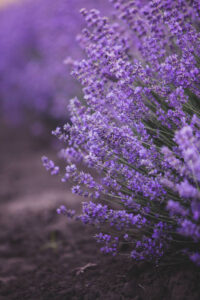
Lavender’s most well-known benefit is its calming effect.
Many people use lavender to ease stress, improve sleep, and bring a sense of relaxation to daily life.
But its power goes beyond that. Lavender has anti-inflammatory and antimicrobial properties, making it helpful for soothing skin irritations, small cuts, and even insect bites.
When used in teas or oils, lavender can help reduce headaches, calm digestion, and support a better mood.
Having lavender in your home means you always have access to a gentle, natural remedy for everyday discomforts.
It’s one of those healing plants that works in multiple ways, giving you both mental and physical support.
Choosing the Right Lavender Variety
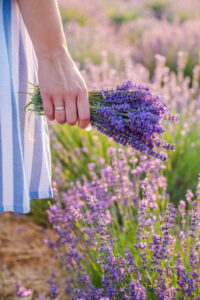
Before you start planting, it’s helpful to know that there are several types of lavender.
Each one has slightly different needs and uses:
- English Lavender (Lavandula angustifolia): The most common type, known for its sweet fragrance and wide use in oils, teas, and cooking.
- French Lavender (Lavandula dentata): A bit less hardy but has lovely serrated leaves and blooms for longer periods.
- Spanish Lavender (Lavandula stoechas): Recognizable by its “rabbit ear” petals at the top of the flower. Great for ornamental purposes and a strong scent.
- Lavandin (Lavandula x intermedia): A hybrid variety, larger and more fragrant, often used for essential oil production.
If you’re just starting, English lavender is usually the best choice because it’s hardy, versatile, and easy to maintain.
How to Grow Lavender at Home
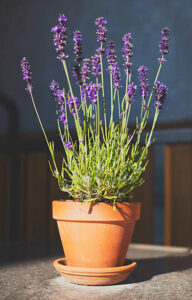
Lavender is surprisingly low-maintenance, which makes it perfect for both beginners and experienced gardeners.
Here’s what you need to know to get started:
1. Picking the Right Location
Lavender loves sunlight. Choose a spot in your garden that gets at least 6–8 hours of direct sun each day.
If you’re growing it indoors, place it near a sunny window or use grow lights to mimic natural light.
2. Preparing the Soil
Lavender thrives in well-draining soil. Sandy or loamy soil works best because it prevents water from pooling around the roots.
If your soil is heavy or clay-based, mix in some sand or gravel to improve drainage.
Lavender prefers soil that’s slightly alkaline, so a little lime can help if your soil is too acidic.
3. Planting Lavender
Plant lavender in spring when the soil has warmed up.
Space the plants about 18–24 inches apart to give them room to grow and allow air circulation.
This spacing helps prevent root rot and other moisture-related problems.
4. Watering Needs
Lavender is drought-tolerant once established, but it does need regular watering when it’s young.
Water deeply once or twice a week until the plant takes root.
After that, you can cut back to watering every 2–3 weeks, depending on your climate.
Overwatering is one of the main reasons lavender fails, so keep the soil on the drier side.
5. Pruning for Growth
Pruning is important to keep lavender healthy and encourage new growth.
After the first bloom in summer, trim back about one-third of the plant to keep it tidy and promote a second round of flowers. In early spring, remove any dead or woody stems.
6. Companion Planting
Lavender pairs well with other sun-loving herbs such as rosemary, sage, and thyme.
It also acts as a natural insect repellent, helping protect nearby plants from pests.
If you’re building a healing or medicinal garden, lavender makes a perfect companion plant.
How to Use Lavender at Home
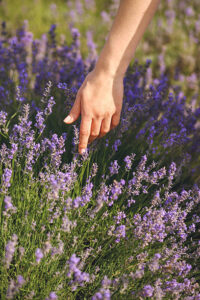
Once your lavender is thriving, you can enjoy it in countless ways.
Here are a few simple uses:
- Lavender Tea: Dry the flowers and steep them in hot water for a calming tea that helps with relaxation and sleep.
- Lavender Oil: Infuse lavender in a carrier oil to make your own soothing massage or skin oil.
- Lavender Sachets: Place dried lavender in small cloth bags to keep clothes smelling fresh and ward off moths.
- Lavender Bath: Add a handful of dried lavender flowers to your bath for a relaxing, spa-like experience.
- Lavender Crafts: From candles to wreaths, dried lavender adds both fragrance and beauty to homemade crafts.
Keeping Lavender Healthy
While lavender is easy to grow, it can still face some challenges if not cared for properly.
Here are a few common problems and solutions:
- Root Rot: Usually caused by too much water or poor drainage. Solve this by improving soil drainage and watering less often.
- Yellowing Leaves: Can be a sign of overwatering or nutrient imbalance. Check the soil moisture and make sure the plant isn’t sitting in soggy ground.
- Pests: Lavender naturally repels many insects, but it can sometimes attract aphids. A gentle spray of water or insecticidal soap usually solves the problem.
With proper care, lavender plants can live for many years, rewarding you with fragrance, beauty, and healing properties season after season.
Harvesting and Storing Lavender

Harvesting lavender at the right time ensures the strongest fragrance and potency.
The best time to harvest is when about half of the flower buds on the stem have opened.
Use sharp scissors or pruning shears to cut the stems just above the leaves.
Tie small bundles together and hang them upside down in a cool, dark, and well-ventilated area.
Once dried, the flowers can be stored in airtight containers to preserve their aroma and healing qualities.
Dried lavender can last for months, giving you plenty of time to enjoy its benefits.
Conclusion
Growing lavender at home is one of the most rewarding choices you can make for both your garden and your health.
It’s simple to care for, beautiful to look at, and full of healing benefits.
Whether you’re creating a space for relaxation or building a garden filled with medicinal plants, lavender fits right in.
With a little sunlight, good soil, and some basic care, you’ll have a plant that continues to give back year after year.
FAQs
- How long does it take for lavender to grow?
Lavender typically takes one to three months to sprout from seed. However, most people prefer starting with small nursery plants, which establish more quickly. Once planted, lavender usually begins to flower in its second year. - Can I grow lavender in pots?
Yes! Lavender grows very well in pots as long as the container has good drainage. Terracotta pots work especially well because they allow the soil to dry out between watering. Place the pot in a sunny spot and follow the same care steps as you would in the ground. - How often should I replace lavender plants?
With proper care, lavender plants can live for 8–10 years. Over time, they may become woody and produce fewer flowers. Replacing them every few years keeps your garden looking fresh and productive. - What’s the best way to use lavender for inflammation?
The easiest method is to make an infused lavender oil and apply it directly to the skin. This helps soothe sore muscles, joint pain, or skin irritation. You can also add dried lavender flowers to baths or compresses for a gentle, natural relief.
